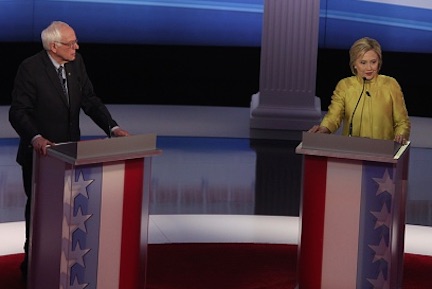JUST LAST WEEK, HILLARY CLINTON ANNOUNCED her new racial justice platform with this speech in Harlem, Bernie Sanders released his racial justice platform last August.
It’s refreshing to see these candidates finally acknowledge racial inequality as a legitimate issue, a perspective that a Pew research study found that 61% of Democrats agree with. Previously, candidates would often call issues of racial inequality only by its symptoms: “poverty”, “educational inequality,” etc. But by not admitting the underlying structure behind these issues in the past, candidates failed to validate the experiences of people of color in the U.S.
There’s too much research confirming the prevalence of systemic racism in this country to justify not calling the issue what it is. Here are some examples of these systemic racial issues that the Democratic candidates now acknowledge:
